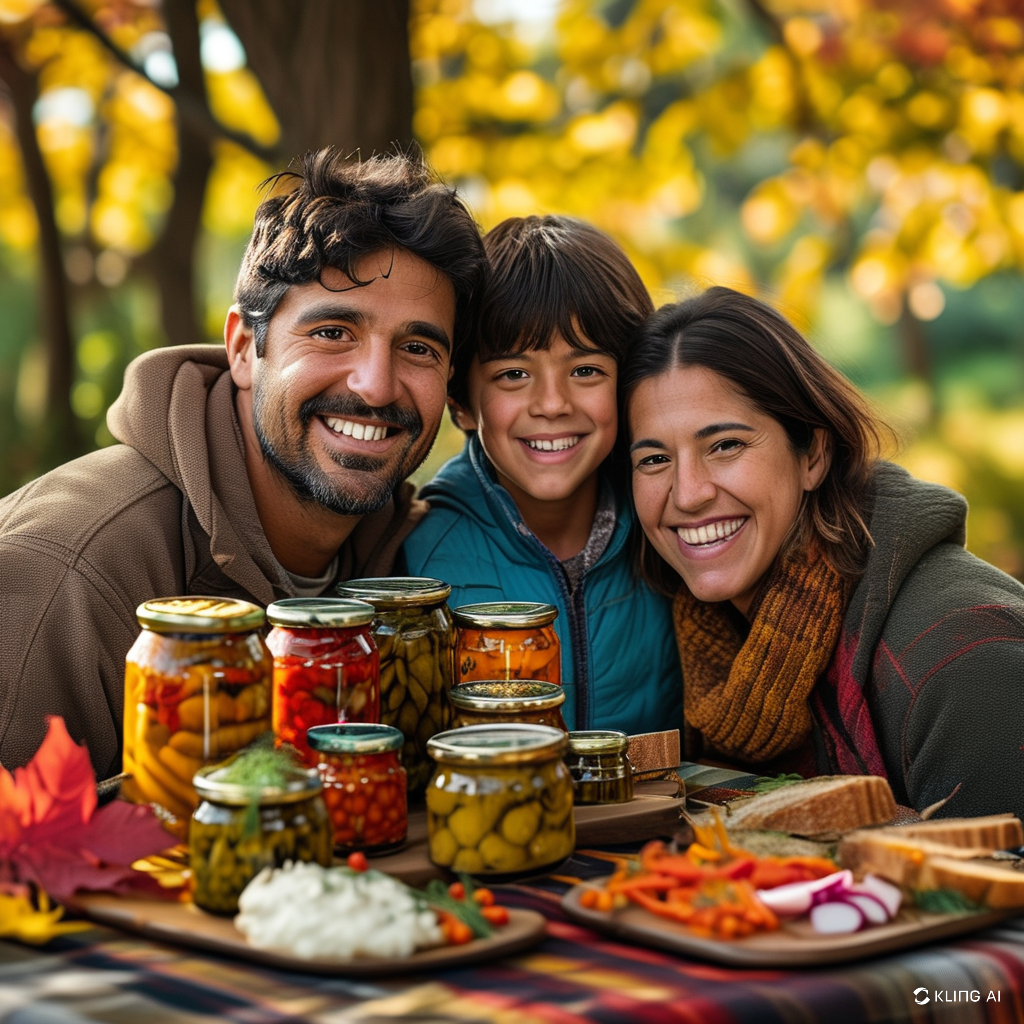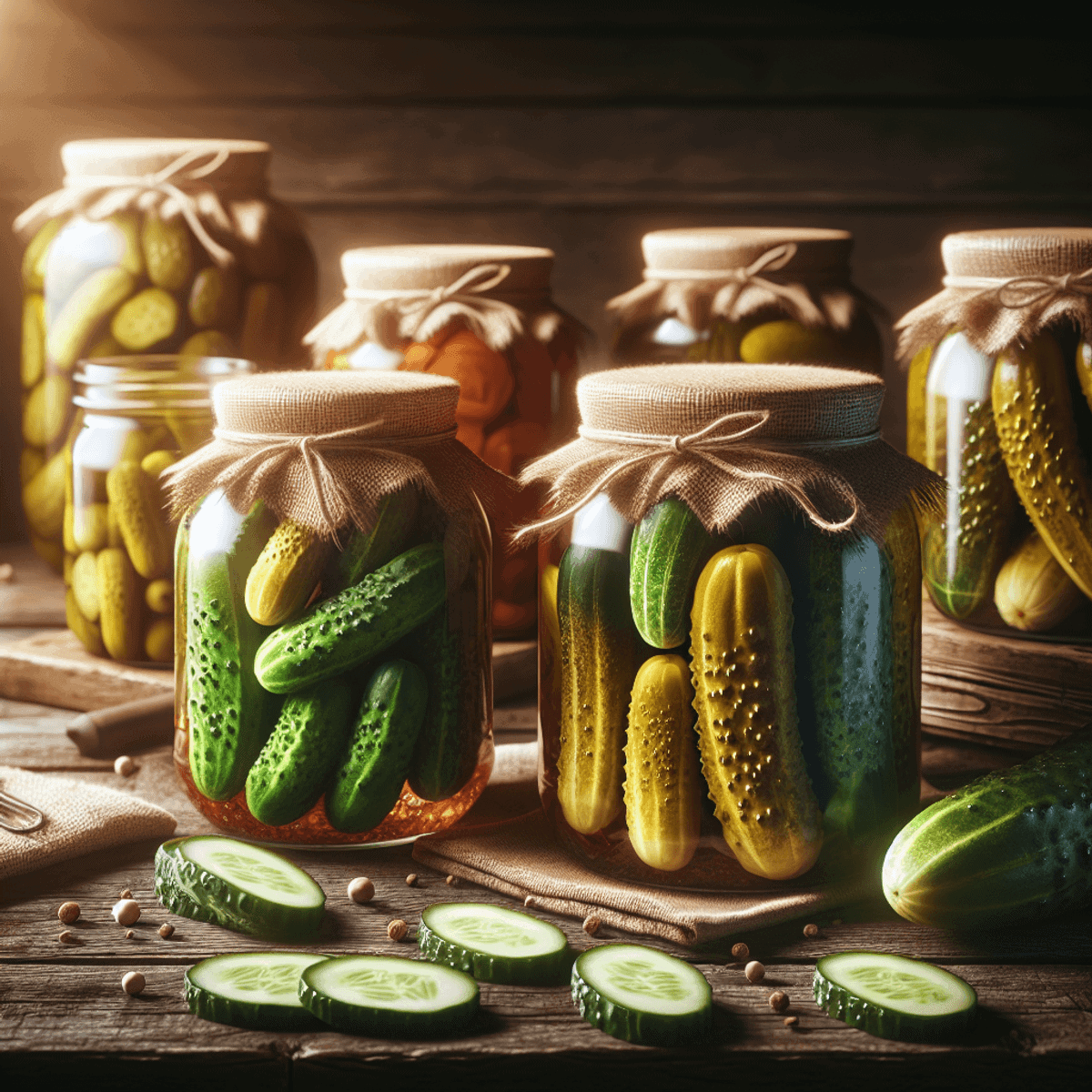Every year on November 14, National Pickle Day celebrates the diverse and tangy world of pickles. This quirky holiday offers pickle enthusiasts a chance to indulge in their favorite preserved snacks and explore new varieties. Initiated by the Pickle Packers Association in 1949, National Pickle Day honors the rich history and cultural significance of pickling.
From its ancient origins to its modern-day popularity, pickling has played a crucial role in preserving food and adding unique flavors to our diets. The practice dates back thousands of years, with cucumbers being preserved as early as 2030 B.C. The term “pickle” itself comes from the Dutch word pekel, meaning brine.
This blog will delve into:
- The origins of National Pickle Day
- The historical significance of pickles
- The cultural impact of pickling
- Nutritional benefits associated with consuming pickles
- Various types of pickles celebrated on this day
- The process behind perfectly pickled produce
- Fun facts about America’s love affair with all things pickled
- Delicious recipes to try on National Pickle Day
- A global perspective on pickled delights
Get ready to embrace your inner foodie and join us as we uncover 10 surprising facts about National Pickle Day!
1. The Origins of National Pickle Day
National Pickle Day was established by the Pickle Packers Association and first observed in 1949. This quirky holiday, celebrated every year on November 14th, was created to honor the significant role pickles play in our culinary traditions and daily lives.
The choice of November 14th is not arbitrary; it serves as a nod to the rich history and cultural impact of pickling. The day emphasizes celebrating the diverse flavors and types of pickles, from kosher dill to sweet varieties, making it a day for all pickle enthusiasts to unite.
Honoring pickles on this special day highlights the importance of preservation methods that have been used for centuries, enabling people worldwide to enjoy vegetables year-round. So when you say “Happy National Pickle Day” or “Happy Pickle Day,” remember it’s about more than just cucumbers in brine—it’s a celebration of a culinary tradition deeply rooted in history.
2. Historical Significance of Pickles
Pickles have a rich history, connected to important people and events. Cleopatra, known for her beauty, believed that pickles had cosmetic benefits and included them in her diet as a way to enhance her looks. On the other hand, Julius Caesar had a different viewpoint; he fed pickles to his soldiers, convinced that these preserved vegetables would give them the strength and energy they needed for their military campaigns.
Christopher Columbus played a crucial role in spreading the love for pickles around the world. During his trips to the New World, Columbus made sure that his ships were always stocked with pickles. This was done to prevent scurvy among his sailors, as pickles are rich in Vitamin C. As a result, this introduction helped solidify pickles’ place in American culinary traditions.
These historical stories highlight the lasting appeal and importance of pickles throughout different time periods and cultures.
3. The Cultural Impact of Pickling
Immigrant communities, especially Eastern European Jews, played a crucial role in shaping America’s pickle culture. Arriving in New York City during the late 19th and early 20th centuries, these immigrants brought with them cherished recipes and traditions, introducing Americans to the joys of pickling.
The Rise of Kosher Dill Pickles
Kosher dill pickles gained immense popularity, becoming a staple in delis and households across the country. These pickles are distinguished by their use of garlic and dill, lending them a distinctive flavor that many find irresistible.
Regional Variations in Pickle Preferences
As pickling became more widespread, regional variations also emerged:
- New York: Home to the classic kosher dill pickle.
- South: Sweet bread-and-butter pickles became a beloved treat.
- Midwest: Spicy varieties found favor among those seeking a bolder taste.
Each region celebrates its unique twist on this timeless snack, highlighting the diverse ways pickles have been embraced across America.
4. Nutritional Benefits of Pickles
Pickles offer an array of nutritional benefits that make them more than just a tasty snack. One of the standout advantages lies in their role in gut health. The fermentation process used to create many types of pickles introduces beneficial bacteria, or probiotics, which support a healthy digestive system.
Key nutrients found in various pickles include:
- Vitamin K: Essential for blood clotting and bone health. Most notably present in fermented pickles like sauerkraut.
- Antioxidants: Help combat harmful free radicals in the body. Found abundantly in pickled vegetables such as beets and cucumbers.
- Electrolytes: Sodium and potassium levels can help replenish lost minerals after intense physical activity.
Including pickles in your diet can thus provide a unique combination of taste and health benefits, enhancing both flavor profiles and nutritional intake.
5. Types of Pickles Celebrated on National Pickle Day
National Pickle Day honors a wide array of pickles, each offering unique flavors and textures:
- Kosher Dill Pickles: Known for their garlic-infused brine, these pickles are a staple in Jewish cuisine.
- Gherkins: Small and crunchy, gherkins are often sweet and tangy, making them perfect for snacking.
- Cornichons: These tiny French pickles are typically paired with pâtés and cold cuts due to their sharp, sour taste.
- Bread and Butter Pickles: Sweet and slightly tangy, these pickles get their name from the traditional practice of serving them on bread with butter.
Differences between varieties hinge on flavor profiles. Sweet pickles like Bread and Butter offer a sugary zest, while savory pickles such as kosher dills deliver robust, garlicky notes. Each type brings its own personality to the table, enriching culinary experiences with their distinct tastes.
6. The Process Behind Perfectly Pickled Produce
Transforming vegetables into tangy delights involves a meticulous pickling process. The two primary methods are brining and vinegar-based.
Brining Method
- Prepare the Vegetables: Wash and cut your vegetables into desired shapes.
- Create the Brine: Mix water, salt, and optional spices.
- Soak the Vegetables: Submerge vegetables in the brine solution.
- Fermentation: Allow them to sit at room temperature for several days to weeks, enabling natural fermentation.
Vinegar-Based Method
- Prepare the Vegetables: As with brining, wash and cut your veggies.
- Make the Pickling Solution: Combine vinegar, water, sugar, and spices.
- Heat the Solution: Bring it to a boil.
- Pack Jars with Vegetables: Place veggies in sterilized jars.
- Pour Hot Solution Over Vegetables: Ensure they are fully submerged.
- Seal and Store: Seal jars tightly and store in a cool place.
Importance of Fermentation
Fermentation is crucial as it enhances the flavor profiles of pickles. This process not only adds complexity to taste but also introduces beneficial probiotics that promote gut health.
Mastering these methods allows you to create a variety of pickled produce, perfect for celebrating National Pickle Day with homemade treats!
7. Fun Facts About America’s Love Affair with All Things Pickled!
Pickles have carved a special niche in the hearts of Americans, with Texas leading the charge in pickle consumption. The Lone Star State consumes more pickles per capita than any other state, showcasing a deep-rooted love for these tangy treats.
Intriguing Statistics
- Annual Consumption: Americans consume approximately 5.2 million pounds of pickles each year.
- Kosher Dill Dominance: Kosher dill pickles remain the most popular variety across the nation.
- Regional Favorites: While Texas tops the list, states like New York and Florida also show significant consumption rates.
Unique Presentations
The creativity surrounding pickle presentations has skyrocketed, particularly with the rise of deep-fried pickles. These crunchy delights have become a staple at state fairs and food festivals, offering a unique twist on traditional snacks. Deep-fried pickles are typically served with a side of ranch dressing or spicy dipping sauce, making them a crowd-pleaser.
Other intriguing pickle innovations include:
- Pickle-flavored potato chips
- Pickle popsicles
- Pickle beer
America’s fascination with all things pickled continues to grow, reflecting an enduring appreciation for versatile and flavorful foods.
8. Celebrating National Pickle Day with Delicious Recipes
On National Pickle Day, it’s time to get creative in the kitchen. There are countless ways to incorporate pickles into your dishes, adding a tangy twist to traditional recipes. Here are some innovative ideas to try:
Dill Pickle Soup
A comforting and flavorful dish that combines the tanginess of pickles with creamy potatoes and dill. Perfect for a chilly day.
Bacon Cheeseburger Casserole with Pickles
Elevate your typical casserole by adding chopped pickles, which bring a delightful crunch and acidity that balances the richness of bacon and cheese.
Fried Pickles
A fair favorite, these crispy delights are easy to make at home. Serve them with a spicy dipping sauce for an extra kick.
Pickle-Infused Bloody Mary
Add pickle juice to your Bloody Mary mix for an extra layer of flavor. Garnish with a spear of dill pickle for the perfect brunch cocktail.
Pickled Vegetable Platter
Create a vibrant platter featuring an assortment of pickled vegetables like carrots, radishes, and beets. It’s a great way to showcase different textures and flavors.
For those looking to find recipes for pickles or pickled vegetable recipes, consider experimenting with:
- Pickled Red Onions: Quick-pickled red onions add zing to tacos, burgers, and salads.
- Sweet Bread and Butter Pickles: A sweet and tangy treat that pairs well with sandwiches or charcuterie boards.
- Spicy Garlic Dill Pickles: Add some heat to your pickling brine with chili flakes and garlic cloves.
These recipes not only celebrate the versatility of pickles but also inspire you to explore new ways to enjoy this beloved snack.
9. The Global Love for Pickled Delights
Pickles are loved all over the world, and each country has its own special way of making them. From tangy fermented cucumbers in Poland to sweet and sour pickles in Sweden, these preserved treats have a wide range of flavors and cultural importance.
Polish Pickles: Ogórki Kiszone
In Poland, ogórki kiszone are a staple. These fermented cucumbers are made using a natural fermentation process, involving water, salt, garlic, and dill. The resulting pickles are tangy and slightly sour, often enjoyed as a side dish or snack. They are particularly popular in traditional Polish cuisine and are known for their probiotic benefits.
Hungarian Pickles: Savanyú Uborka
Hungary offers savanyú uborka, which translates to sour gherkins. These pickles are typically brined with vinegar, sugar, salt, and spices like mustard seeds and bay leaves. The Hungarian variety tends to have a sharper flavor profile, making them a zesty addition to meals. They often accompany hearty dishes such as goulash or stews.
Swedish Pickles: Inlagd Gurka
Inlagd gurka is a beloved pickle variety from Sweden. These sweet and tangy pickles are made by soaking cucumbers in a mixture of vinegar, sugar, water, and spices like dill and mustard seeds. Commonly served alongside meatballs or as part of a smörgåsbord (a type of buffet), these pickles bring a balance of sweetness and acidity that complements many Swedish dishes.
Exploring these global varieties on National Pickle Day can be an exciting way to appreciate the diverse ways cultures around the world enjoy their pickled delights. Each type offers unique flavors that reflect the culinary heritage of its origin country.
Conclusion: Happy National Pickle Day!
Celebrate National Pickle Day by trying out new recipes or exploring pickled dishes from around the world. Whether you’re enjoying a crunchy kosher dill, sampling tangy Polish ogórki kiszone, or treating yourself to deep-fried pickles at a county fair, this day is all about enjoying everything pickled.
So go ahead, embrace your love for food and discover the wide variety of pickled treats out there.
Happy National Pickle Day! Enjoy the crunch!















